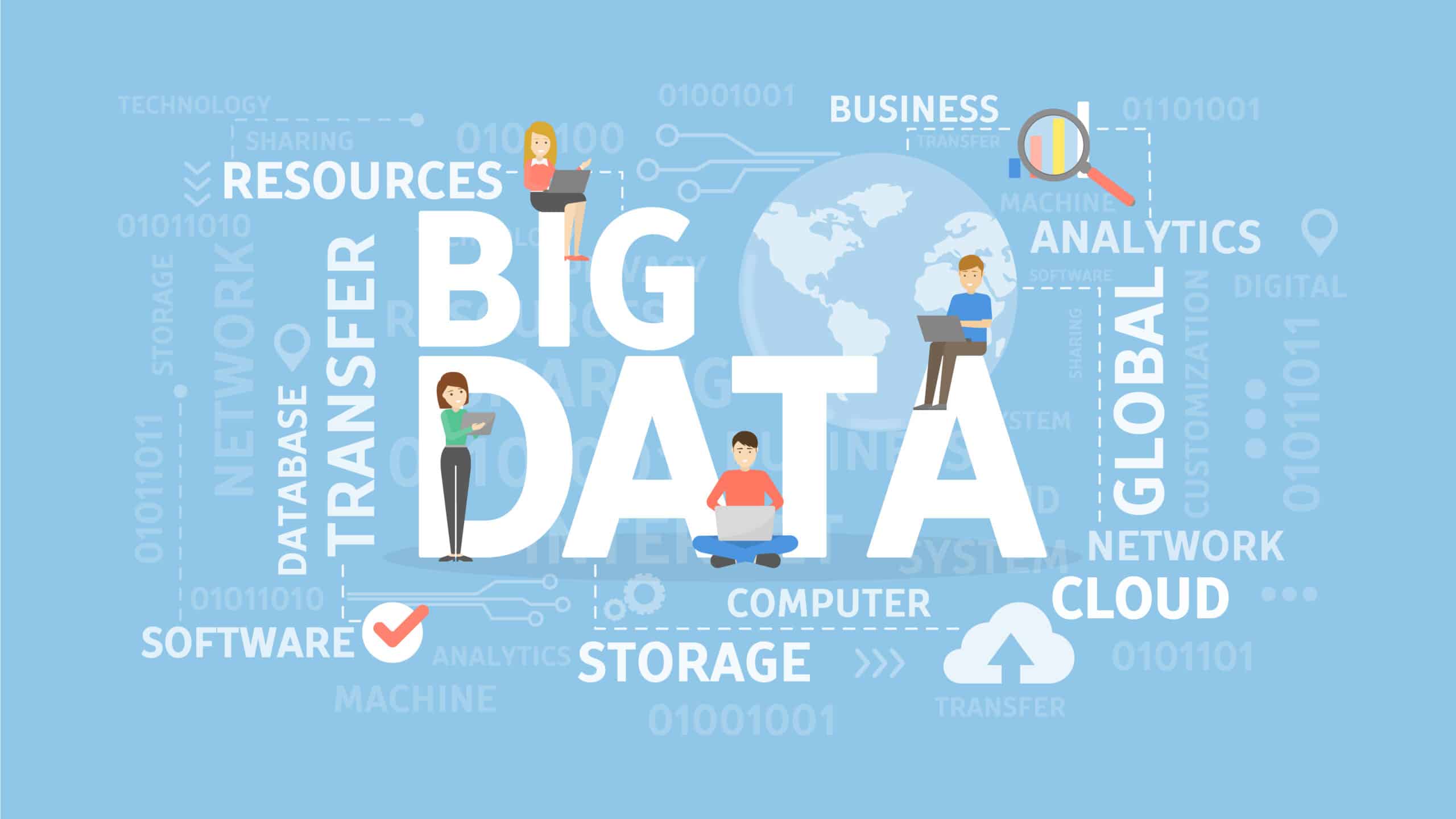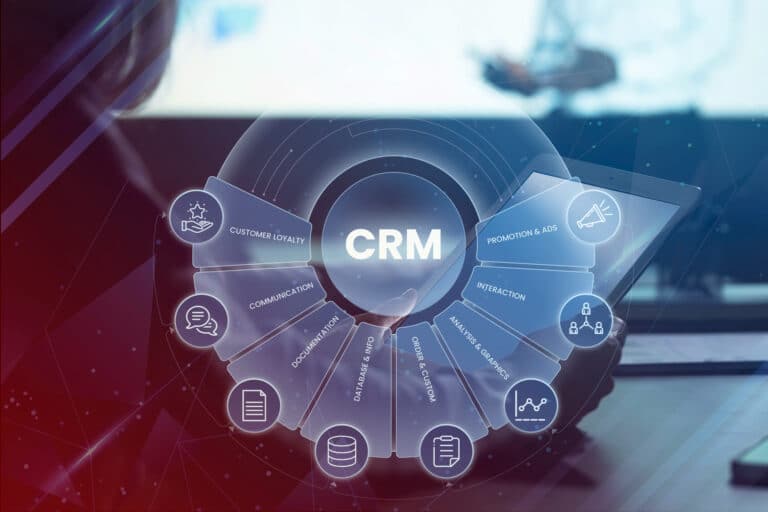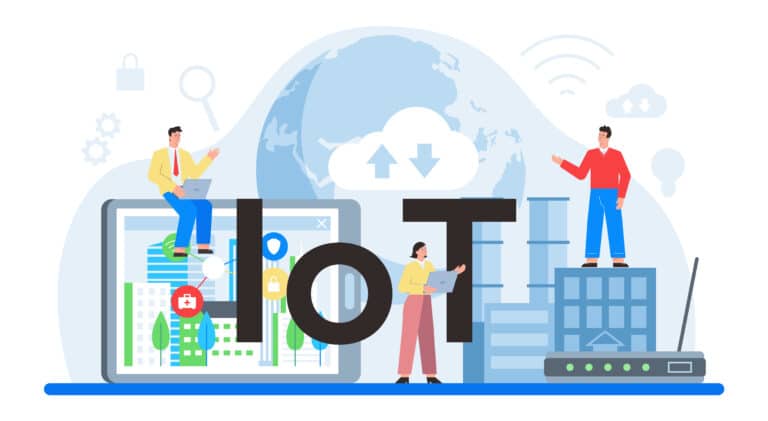The term “big data” refers to a variety of data sets that are generated every day.
While there is no clear definition, an example would be the riding history recorded on transportation IC cards, GPS location information, email contents, SNS posts and comments, etc.
Business decision-making is increasingly based on extensive data analysis and the knowledge derived from it.
Do you also use such big data at your company?
If you have no experience with big data, however,
How does considerable data work? Does it benefit businesses?
However, the use of big data can be beneficial for business if done correctly.
In this article, we will explain the following so you can use big data effectively in your business.
What is big data?
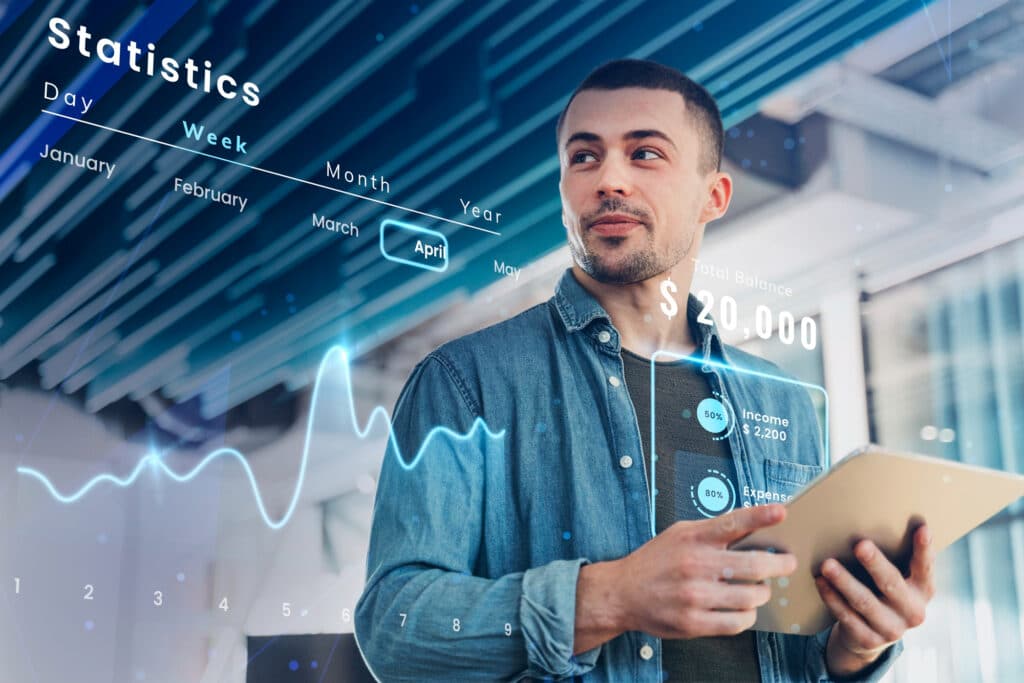
Big data is “a huge amount of data generated daily.”
However, more is needed to understand what big data is.
We will discuss the following here.
The first step is to understand what big data is.
Characteristics of big data
Its vastness and capacity are probably the first things that come to mind when you hear “big data.”
Despite this, big data generally has the following three characteristics.
Three characteristics of big data
| Volume | Variety | Velocity |
|---|---|---|
| It has a large capacity. Several terabytes to several petabytes (Guideline) | Text, audio, images, videos, and location information can be stored in addition to data represented by columns and rows. | Processing requires speed due to the high frequency and speed of occurrence. |
Big data refers to a data group with all three V characteristics. However, large amounts are not the only characteristic.
Data types that make up big data
The following two types of big data can be categorized according to their structure or format.
| Structured data | A two-dimensional tabular format with rows and columns of data. A tabular format can be used for data you can see at a glance. Spreadsheet software can be used to aggregate and analyze the data. |
| Unstructured data | The data has no regularity, and converting it to a tabular format is challenging. As well as text, it includes audio, images, and videos in various formats. Analyzing and aggregating it isn’t easy in its original form. |
Big data can be structured data converted into tabular format, which we have traditionally handled, or structured data converted into tabular format, which we have usually dealt with, or structured data converted into tabular format, which we have traditionally dealt with. Unstructured data may not be suitable for aggregation.
How does structured data differ from unstructured data in terms of its types? Could you continue reading to learn more about me?
Example of big data
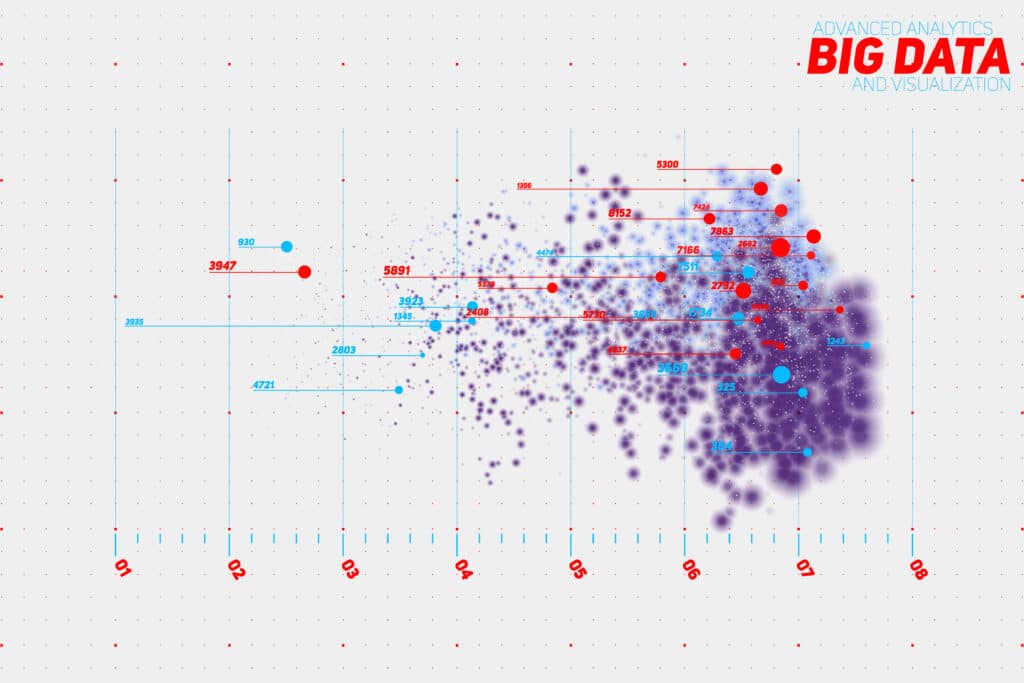
Next, we will discuss some examples of structured and unstructured big data.
Here is an example of structured data that is classified as big data.
Big data example (structured data)
- Convenience store, supermarket, and other retail POS data.
- Data about customers (name, address, credit card information, etc.).
- Inventories every day
- Statistics on a variety of topics
One of the most valuable types of big data is structured big data, organized in a fixed table format. Using this technology is relatively easy.
The next step is to introduce a prominent data example of unstructured data.
Big data example (unstructured data)
- Web/SNS reviews of products and services
- Data from surveillance cameras
- GPS data collected about location.
- Data for design
- Sensor data obtained from equipment and equipment sensors
- Plan and estimate data
Data like this is an example of unstructured big data.
The lack of a fixed format in its original state makes it challenging to analyze, even among big data, but its diversity allows it to be used in various ways.
Introduction to big data
Early in the 2010s, big data began attracting attention.
Documents such as proposals and estimates, design data, and video data from surveillance cameras must have existed before then.
Why did its use become popular in the 2010s?
Data volume explosion
The explosive growth in the amount of data handled worldwide has contributed to the widespread use of big data.
There were several significant changes before and after big data began to attract attention, which led to increased data.
As smartphones became more popular in the late 2000s, so did SNS such as Facebook and Twitter (= posting text and image data).
Additionally, image and video content will continue to increase in the first half of the 2010s, and data viewing and uploading will be smoother.
It is predicted that by 2025, 175 ZB (175 trillion GB) of digital data will be handled worldwide due to the spread of information communication terminals and social networks.
Big data is the meaningful use of such constantly growing amounts of data, and the spread of big data is responsible for the dramatic increase in data. There is no doubt that it played a role.
Technology development
One of the reasons behind using big data is the development of technology for collecting, storing, and analyzing data.
In addition to the increased digital data, appropriate computers and systems are necessary to manage and analyze such vast data. Data storage is no different.
These technological advances have enabled big data to be used in general enterprises by overcoming these challenges.
- The Internet of Things (IoT) and its development
- The popularity of cloud computing services
- The establishment of a distributed data management system
- The development of tools that utilize big data
As a result of these technological advances, the technical and financial barriers to collecting, storing, and analyzing big data have been reduced.
Companies should utilize big data for their future
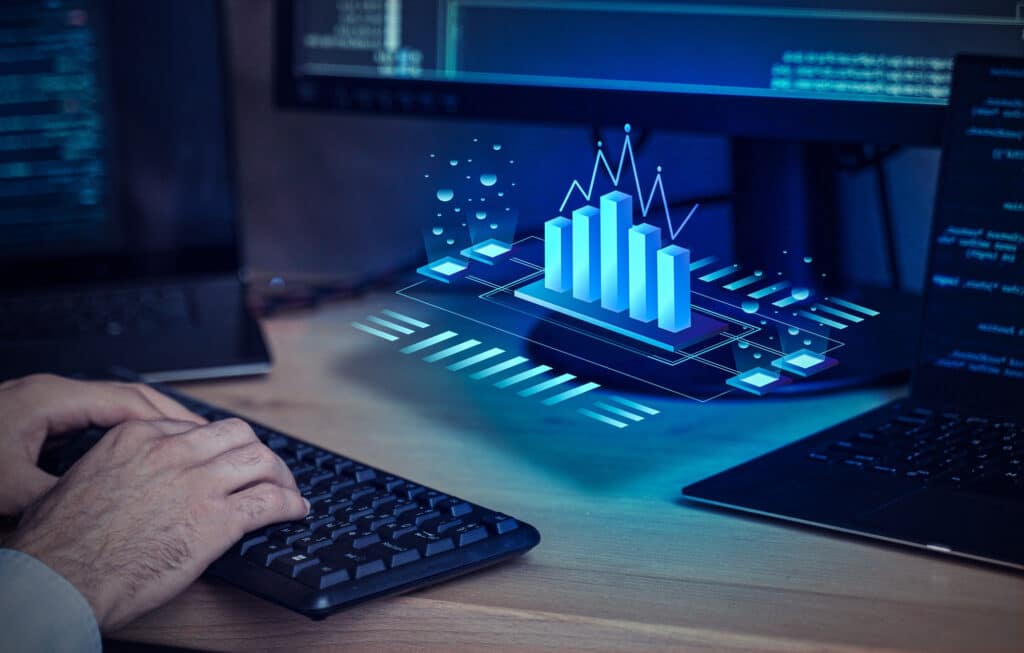
What is the purpose of big data in business?
How is big data viewed around the world?
By 2026, the global big data market is expected to reach US$273.4 billion, a growth rate of 11.0%, according to a Markets and Markets research report.
The use of big data is becoming more widespread worldwide; thus, this is a sign of progress.
In the future, big data will gradually become a part of everyday life.
As a result, companies that use small data may stay caught up on competitors that do.
It would help if you considered using big data as soon as possible to avoid such situations and gain an advantage over your competitors.
Our next step is introducing you to more practical aspects of big data, such as use cases and benefits.
Big data usage examples
Let’s look at some actual big data use cases now.
See how each company uses big data to achieve its objectives.
1. Restaurant visitor forecasting in tourist destinations
Extensive data analysis has made it possible to accurately predict the number and characteristics of visitors to a restaurant near the Shrine.
Previously, this cafeteria’s management system was based on its employees’ experience and intuition. Using their years of experience, they predicted the number of visitors, ordered ingredients and created shifts.
However, this system always results in waste, such as food waste and overstaffing. To solve this problem, the restaurant used big data in the following ways.
Purpose
- Reduce food waste and inefficient staffing.
- Our management system relies on employee intuition to achieve this goal.
Utilized Big data
- Over 200 types of open data are available, including weather and accommodation forecasts for nearby hotels.
- Data that is publicly available for secondary use is called open data.
- The number of recent visitors and the number of accesses to review sites are collected in-house.
Analyze results
- The attributes and number of visitors can now be predicted with 95% accuracy
Achievements
- Reducing food waste (Reduced waste loss by 72.8%)
- Provides efficient staffing (Sales per employee nearly tripled)
Through highly accurate visitor forecasts, ordering just the right amount of ingredients and allocating staff to operate the cafeteria efficiently is now possible.
Management benefits significantly from reducing waste in this way.
2. Identify consumer behavior when it comes to vending machines
With the help of big data, a beverage manufacturer whose main product is coffee has implemented product placement in vending machines.
In the past, vending machine users were believed to move their eyes from the top left in a Z-shape, and the main product was generally located on the top left.
However, after collecting and analyzing big data, it was discovered that users were viewing products from the bottom row. Hence, the beverage maker placed its main products at the bottom.
Purpose
- Vending machine product placement that works
- To accomplish this, we study vending machine user behavior.
Utilized big data
- Vending machine eye-tracking data (Tracking eye movements using eye-tracking data)
- Consumer response data from conventional surveys
Analyze results
- When users use vending machines, we found out what areas they focus on
Achievements
- Place main products in areas that attract attention to increase sales
Increasing sales of core products was made possible by understanding consumer behavior, such as eye movements in front of vending machines.
Vending machines, as well as store displays, can use big data in this way.
3. Calculate passersby’s entry and viewing rates for stores
Using data from analytical cameras installed in a general merchandise store that sells clothing and plants, a company calculated the entry rate of people passing by the store and the display viewing rate.
When combining this with POS data, we also found a correlation between store entry rates, viewership rates, and sales amounts.
Their results led them to repeat trial and error to increase store entry and viewership rates, sometimes doubling sales.
Purpose
- Sales growth
- Displays and product displays for this purpose should be improved
Utilized big data
- Moving object data acquired by a camera
- Data from POS (point of sale)
Analyze results
- Now it is possible to calculate the entry rate and display viewing rate
- Acknowledged the correlation between sales amount, store entry rate, and viewership rate
Achievements
- Double sales by improving viewership and store entry rates
The use of big data in vending machine product placement has much in common with this case.
Using big data is very useful in understanding consumer behavior, as you can see from both instances.
4. Identify production bottlenecks
A company manufacturing parts for transportation equipment can identify the causes of decreased productivity by analyzing data from machine tools.
We identified bottlenecks by taking appropriate improvement measures, and as a result, the operating rate of our in-house machine tools doubled.
Purpose
- Increasing machine tool utilization (improving manufacturing efficiency)
- Identify the factors that hinder productivity to achieve this goal.
Utilized big data
- Locations, operating status, operating history, and operating rate of machine tools
- Data is collected by connecting machine tools to commercially available systems.
Analyze results
- Productivity was hindered by time spent looking for tools and traditional worker placement.
Achievements
- As a result of organizing tools and rearranging workers, the operating rate of in-house machine tools will double (sales will increase by 1.8 times as well).
By using big data in this way, manufacturing sites can benefit greatly.
Benefits of utilizing big data
I hope you have seen some of the benefits of using big data by looking at examples.
We can summarize the benefits of using big data by citing the following three points.
- Predicts future events accurately
- Normally, difficult-to-understand situations become more straightforward to comprehend.
- Quality of decision-making improved
Let me explain them one by one.
Predicts future events accurately
With the help of extensive data analysis, future conditions can be predicted more accurately than ever.
These advantages make big data helpful in predicting visitors and product demand.
For example, as in the case of the cafeteria introduced earlier, data owned by the company, such as website access logs and past visitor numbers, as well as weather data and lodging (people flow) forecasts provided by government/local government bodies. It is possible to predict the number of visitors and their characteristics by combining and analyzing these data.
Additionally, retailers can predict demand for each product by examining past sales, weather, and calendar data that reflects events and holidays.
As a result, if the future situation can be predicted, resources can be allocated appropriately, thereby reducing waste.
Profits will also increase when unnecessary inventory isn’t carried out and unnecessary labor costs aren’t incurred.
Companies benefit from being able to predict future situations.
Typically, difficult-to-understand situations become more straightforward to comprehend
The current situation can be clearly understood by analyzing big data.
The following situations, for example, are generally difficult to understand accurately.
A customer’s behavior before purchasing a product
How people come to the store, what they pay attention to.
Market trends
The popularity of our products and services, the demand for them, and the perception of them.
Industrial equipment status
The location, type, and severity of the problem, any signs of failure, etc.
Condition of manufacturing site
What are the things that negatively impact productivity? Do you work safely? Similarly.
Understanding the current situation makes it possible to take appropriate responses and make improvements.
Therefore,
- Productivity and sales increased
- Effective Maintenance response
- Developing and improving products
As a result, the company will benefit from such things.
Quality of decision-making improved
The quality of decision-making will improve dramatically if big data is used in business.
By analyzing big data, we can understand the future and current situation and make informed decisions.
Only if big data is used will companies likely rely on the intuition and experience of employees to predict the future and understand the present. It is impossible to say that decisions based on this are objective and accurate.
Therefore, it is difficult to say that the quality could be higher.
Conversely, if derived from objective data, big data can only provide insight into the future and current situation. Consequently, decisions based on this will be objective and accurate.
Making high-quality decisions without relying on intuition or experience is possible with big data.
Summary
“big data” refers to the vast amount of information generated daily.
In addition to being composed of structured and unstructured data, it has the three V characteristics of Volume, Variety, and Velocity (frequency of occurrence/speed of processing).
Using big data for business is an extension of the general data analysis and utilization we do daily.
A wide range of knowledge and discoveries can be obtained by analyzing big data, including a wide variety of data.

